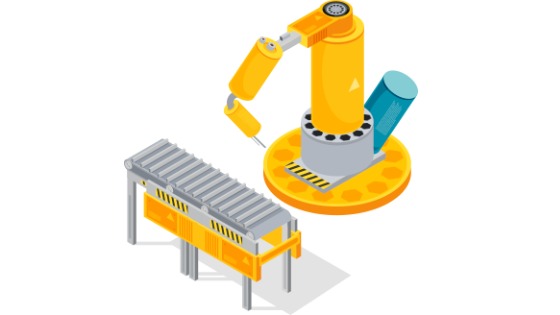Features and mechanism of roller conveyor at a glancePosted by Ravindra Nandeshwar on February 16th, 2021
Equipment which have capability to make material handling easier are often defined as conveyor system by many people. But, when it comes to reflecting over the roller conveyor, it is the mechanism of transporting goods with the proper utilization of rollers in the gadget. The force of gravity or propulsion is used in the functioning of the roller conveyors. Besides, these roller conveyor supplies make the transportation of goods effective, efficient and easier. At present, one can find conveyor system everywhere where the material handling is being carried out. Due to their utmost convenience, they are worth being investing on for boosting the productivity of an organization. It’s time to take a closer look at different features of roller conveyor for better understanding. To start with, in the food and clothing, this type of roller system is often used to shift packaged goods and packaged goods from one place to other respectively. The idea of transferring products from the starting line to the end of the machine without any hassle is unique selling proposition of this roller based conveyor. From reducing the manual labour to safeguard the quality of baggage, the roller conveyor is intended at simplified transportation. In addition to this, employees will not get tired in loading and unloading the boxes of varied sized if the roller based conveyor gets installed in the warehouse or any material handling organization. Whether it is stacking up of boxes or moving the products manually, these actions can be eliminated when the roller conveyor is purchased in a timely manner. As of now, let’s focus on the types of conveyor systems within this version of equipment: Gravity Roller Conveyor It is a frame wherein, free rotating rollers are lined up in order to use the force of gravity in this type of roller conveyor to transport materials downwards. Most of all, light to medium sized goods which can be conveyed without a motor enable the organization to use this economical solution. In the gravity roller conveyor, the accessories such as supports, hanging brackets, pop up stops, slide rails and curves can be purchased for better accessibility. These conveyors are used especially when there is no specific timing required for loading of goods. They may be manufactured by using steel, plastic or aluminium as the prime material in the framework. Belt Driven Roller Conveyor In this form of roller conveyor, a long belt is used in the framework powering each unit for smooth conveying of products. This motorized belt regulates the motion of products being transported. It comes with control points so that the functioning is stopped and resumed during the conveying activities. The V shaped belt is used in curved roller conveyors with this belt mechanism. In the other conveyors, the straight belt is utilized for loading and unloading materials with utmost precision. Apart from this, there are some belt driven conveyors which can support goods with a broader width more than the frame. But, it should be noted that moisture, excessive heat or debris should not accumulate on the belt under the roller conveyor. These conditions have tendency to damage the entire conveyor system while interrupting its smooth functioning. Loads which need to be periodically stopped and require reversible action can be executed through these types of roller conveyors. Chain Driven Roller Conveyor With a similar mechanism as that of belt driven roller conveyor, this conveyor system follows the chain operated material handling system. Each roller is powered by a long chain to transport products from one place to another. This roller conveyor allows heavy duty products to be conveyed without any hindrance while employing the operation of chain in reversible activities of warehouse and other organizations. The chain driven roller conveyors are designed in a durable manner where chain is kept engaged when goods need to be moved without faltering. The non-looped continuous chain of this type of conveyor equipment drive the entire machine for medium to heavy duty operations of material handling. Line Shaft Roller Conveyor In this type of roller conveyors, the rotating shaft powers the entire line to easily manage the handling of goods. Furthermore, drive spools and urethane belts are connected to the line shaft in order to make conveying operations quiet and simplified. This roller conveyor is ideal for accumulation, minimum back pressure and sorting activities carried out in industries as well as warehouses. It is also suitable for medium to heavy load applications of material handling. Zero Pressure Roller Conveyor In order to ensure that products do not touch each other and flow smoothly in the frame during conveying operations, zero pressure roller conveyor is utilized. It is manufactured with hi-tech control system energise and de-energise the conveyor during the business activities. With the help of sensors and motors, this type of roller conveyor plays significant role in executing automation applications of material handling. Even though these types of roller conveyors may be complicated yet their efficiency is commendable and aimed at boosting productivity of the company. Final Words After knowing the types and features of roller conveyors, it will be appropriate to know their selection agenda. To be precise, the roller conveyor material, in terms of frame and the entire conveyor system must be evaluated. The material from which the roller conveyor is made up of determines its durability and effective application. Moreover, the size and orientation as well as the distance of conveying are some of the other specifications which are beneficial in finalizing the roller conveyor system. Last, but not the least, the environment in which the roller conveyor has to perform routine activities must also be observed prior to finalizing the particular equipment. Like it? Share it! |



